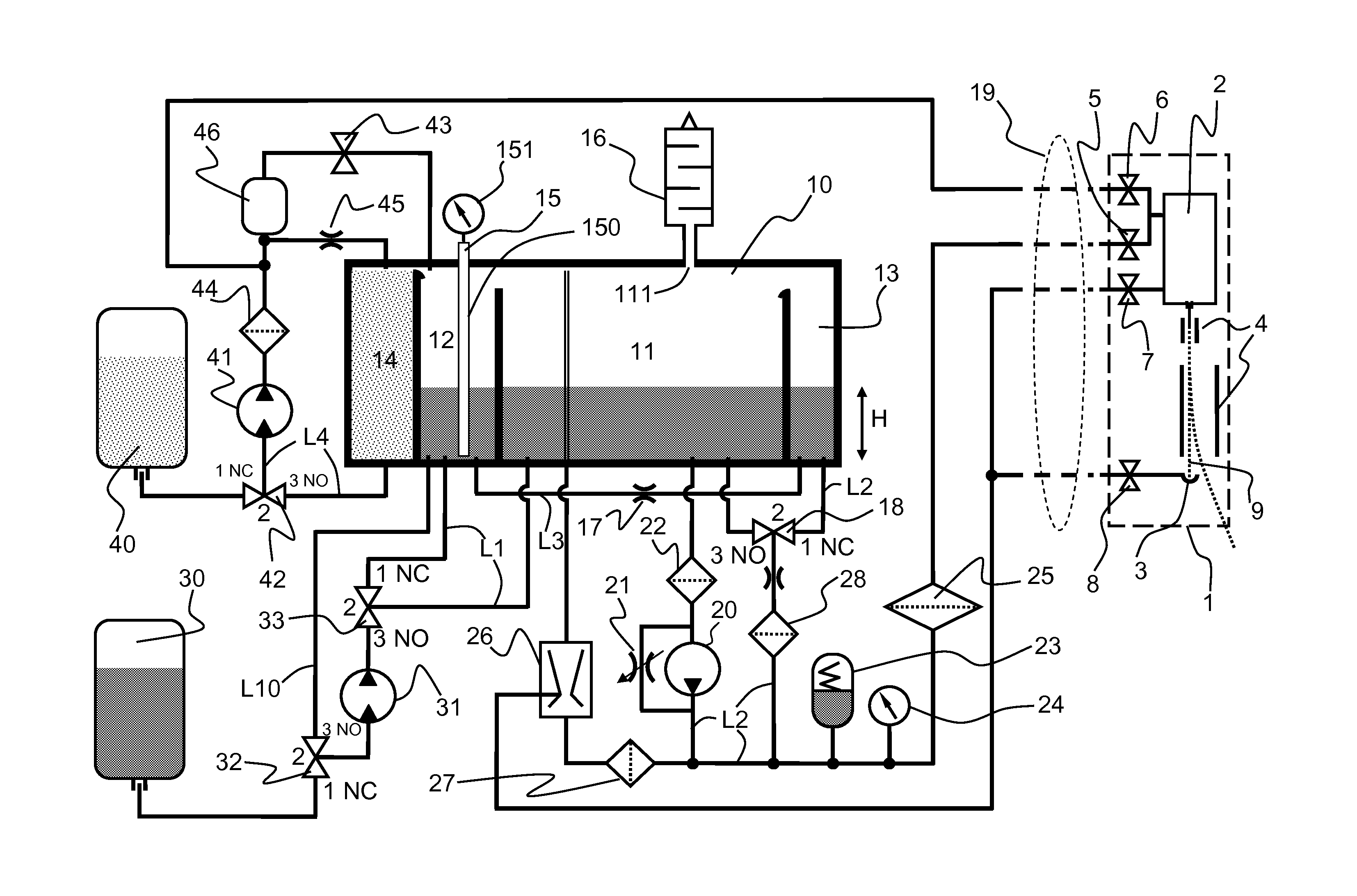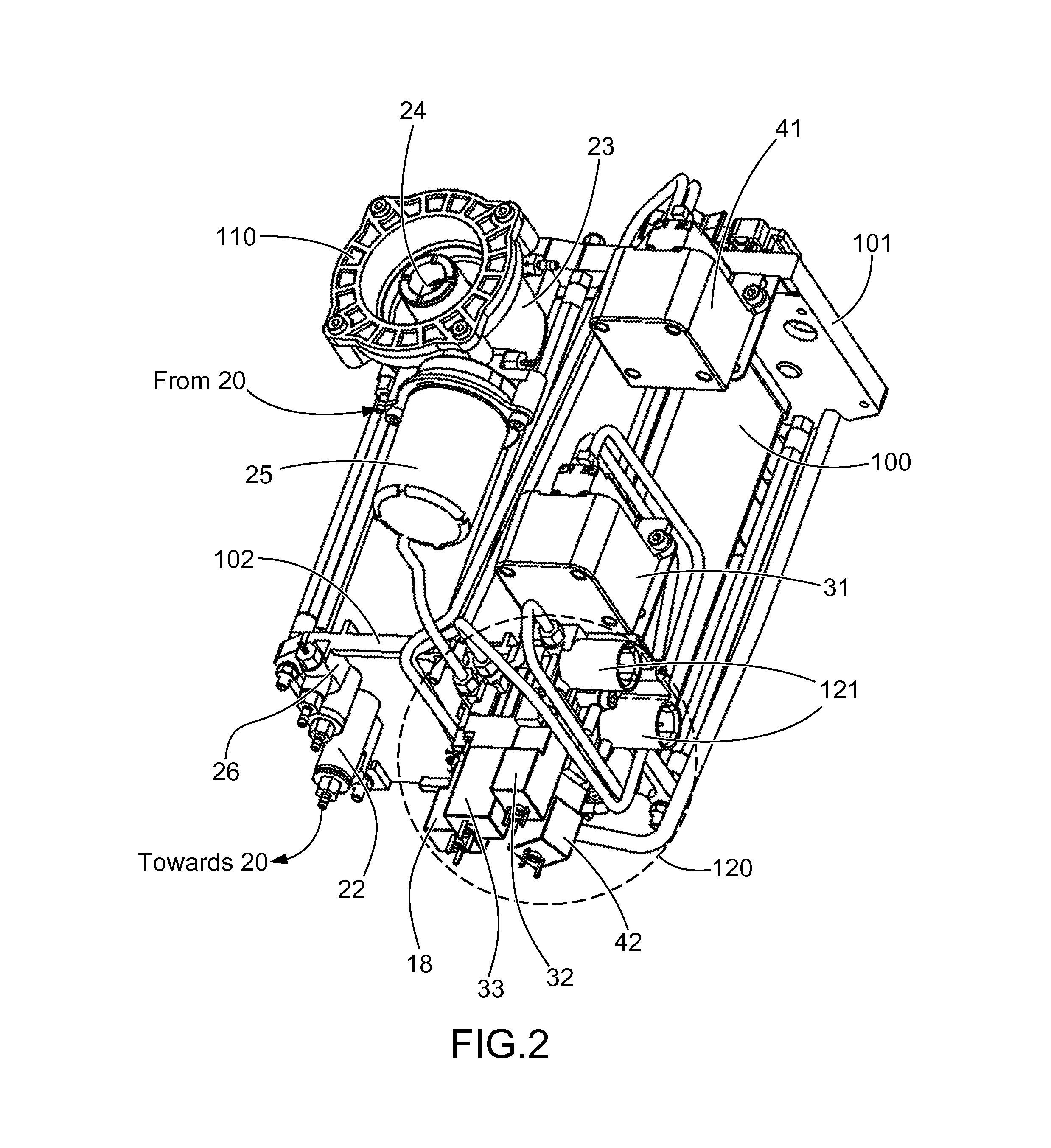Measuring system in a fluid circuit of a continuous inkjet printer, related fluid circuit and block designed to implement said measuring system
a technology of measuring system and fluid circuit, which is applied in printing, other printing apparatus, etc., can solve the problems of system remains, cost, and inability to use detectors in insulating fluids, and require the implementation of a significant number of components
- Summary
- Abstract
- Description
- Claims
- Application Information
AI Technical Summary
Benefits of technology
Problems solved by technology
Method used
Image
Examples
Embodiment Construction
[0089]FIG. 1 shows a hydraulic diagram of the fluid circuit according to the invention, of a multi-deflected continuous inkjet printer with its printing head 1.
[0090]The head 1 comprises a drop generator 2 and a recovery gutter 3. It integrates four solenoid valves 5, 6, 7, 8 each connected to one of the four hydraulic conduits entering the head through the umbilical 19.
[0091]The ink-head solenoid valve 5 allows, in the open position, the supply of the drop generator 2 with pressurized ink.
[0092]The solvent-head solenoid valve 6 allows, in the open position, the supply of the drop generator 2 with pressurized solvent.
[0093]The purge solenoid valve 7 allows, in the open position, during certain maintenance operations, connection of the drop generator 2 to a vacuum source.
[0094]The gutter solenoid valve 8 allows, in the closed position, isolation of the gutter 3 when no jet 9 of ink is emitted by the drop generator. This prohibits air from entering when the jet 9 is not emitted in ord...
PUM
 Login to View More
Login to View More Abstract
Description
Claims
Application Information
 Login to View More
Login to View More - R&D
- Intellectual Property
- Life Sciences
- Materials
- Tech Scout
- Unparalleled Data Quality
- Higher Quality Content
- 60% Fewer Hallucinations
Browse by: Latest US Patents, China's latest patents, Technical Efficacy Thesaurus, Application Domain, Technology Topic, Popular Technical Reports.
© 2025 PatSnap. All rights reserved.Legal|Privacy policy|Modern Slavery Act Transparency Statement|Sitemap|About US| Contact US: help@patsnap.com



